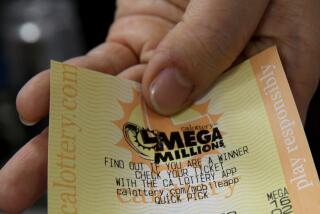Keep Paying Private School Tuition or Buy a Home in a Better District?
- Share via
Q: My husband and I own a successful business, with many of our clients here in Los Angeles. We love the city, but our two children must attend private schools because the public schools in the area are so poor. We believe that moving out of the city to a better school district would leave us financially better off because the $24,000 a year we spend for tuition could go toward a mortgage payment, allowing us to buy a larger home with more space. We could go as far south as Laguna Beach or as far north as Santa Barbara. The kids would be safer and we could invest money in a house rather than in tuition. How would you assess such a move, and how much “downtime” should we allow for new-client development?
A: Here’s an eye-opener: What you’re paying for private school tuition, by itself, would support a $300,000 mortgage at today’s interest rates. Add that to your current mortgage and equity, and you’ll have some idea of what you could afford if you moved.
The problem, of course, is that your client base is here. Some businesses can survive via fax and e-mail; others need face-to-face contact. You might consider hiring a small-business consultant or coach who could help you assess the impact of a move. The costs and potential “downtime” vary enormously, depending on the type of business, its history and your own ability to garner new business. You may find that the reduction in your income makes you ineligible to get as big a mortgage as you would like.
Another problem is that areas with good schools generally have higher home costs than areas with comparable homes but poor schools. That hits you two ways. The value of your current home to potential buyers is essentially discounted, because your schools aren’t great, and the prices of the homes you might want are inflated because of the desirable schools.
Overall, homes in good school districts tend to hold their price better when property markets are weak--that’s why it can be smart to buy in an area with great schools, even if you don’t have kids.
There is also the issue of moving costs. You should figure that you’ll spend at least 10% of the value of your current home to sell your house, buy a new house and move.
An idealistic option is to try to improve your local public schools. You could get together with other parents, volunteer your time, give money or find corporate sponsors to help pay for extra programs. It’s obviously not a short-term fix, but given your current investments in your home and business, it’s worth thinking about.
In any case, before you bail out of the city completely, consider neighborhoods closer to your home that have good schools. That would at least allow you to keep your current clients. Talk to other parents and real estate agents to get a feel for where you should search.
*
Q: I know the odds are against my winning the California lottery, but I’d like to know a shorthand way of figuring what the 26 annual payments would be vs. the lump sum, and what I’d get after taxes. Is there a way to know which option is better to take?
A: Many a commuter’s routine has been enlivened by the mental gymnastics required to figure how much one would really get--and further energized by thoughts of how to spend it.
To answer your last question first, someone who is a good money manager and a confident investor--or who has access to competent help--is better off taking the lump sum. If you invest well and manage your cash flow intelligently, you can earn a better return over the long run than you would if you took the payments. But if you have trouble paying your bills now, take the annual payout route. Few things in life are quite so pathetic, and less likely to attract sympathy, as a lottery millionaire who has to declare bankruptcy.
To determine how much you would get if you opted for the lump sum, just slice the face value of the lottery prize in half, and you’ll be in the right ballpark. (After all, what’s a few thousand bucks more or less to a millionaire?)
If you want to know what you’d get after taxes, multiply that result by 60%. This may be a little off, because exemptions and deductions could lower your tax bill, but it’s close enough for California dreaming.
To figure out the annual payments, however, you’ll probably need to pull over to the side of the road and dig out your calculator.
If you took the 26 annual payments option, your first payment would be 2.5% of the lottery prize. Each year the payments would rise by .1 to .2 percentage point, until your final payment is 5.1% of the jackpot. In the case of a $20-million prize, then, your first payout would be $500,000, your next $520,000, and so on, until the last payout of $1.02 million.
Your tax bill depends on the size of the annual payments. The 36% federal tax bracket for married filing jointly in 1998 starts at $155,9511 in taxable income and ends at $278,450, whereupon the 39.6% rate applies. (California lottery winnings aren’t subject to state income taxes.) Your final tax bill depends on your deductions and exemptions. If you give a big chunk of that money to charity, for example, you’ll be able to write off that gift and reduce your taxes. Could I interest you in a donation to the Money Talk Columnist’s Early Retirement Fund?
*
Liz Pulliam is a personal finance writer for The Times and a graduate of the certified financial planner training program at the University of California, Irvine. She will answer questions submitted--or inspired--by readers on financial issues in this column. She regrets she cannot respond personally to queries. Send questions to liz.pulliam@latimes.com or Money Talk, Business Section, Los Angeles Times, Times Mirror Square, Los Angeles, CA 90053.
More to Read
Inside the business of entertainment
The Wide Shot brings you news, analysis and insights on everything from streaming wars to production — and what it all means for the future.
You may occasionally receive promotional content from the Los Angeles Times.










